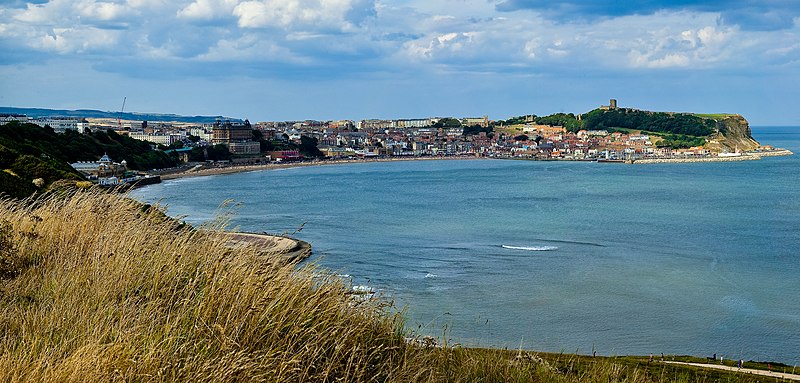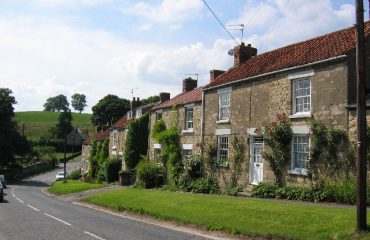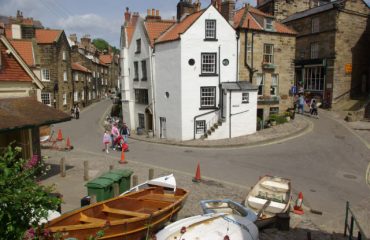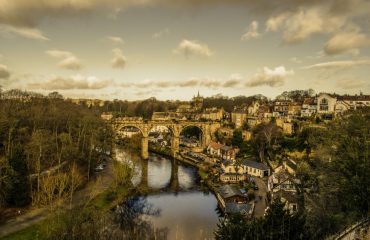
Seated in a Borough of its own name, Scarborough is a gorgeous north sea coast town. With stunning limestone cliffs and the older parts of town situated around the harbour. Scarborough is the largest holiday resort of the Yorkshire Coast, and we can see why.
History:

The town is fabled to have been founded in 966 AD by a Viking raider, this claim however was made during a pageant in the 1960’s and no archaeological evidence has been found in support of this assumption. However, we do have stunning archaeological evidence to show from the area in the Roman period of British History. On top of a cliff overlooking the North Sea the Romans constructed a signal station. This station was built as a warning station to alert against the arrival of Sea-Raiders and give the residents or garrison time to prepare. Through analysis of coins found at the site it seems that the area was occupied from around 370 AD until the early Fifth Century. In 2021 a geological study for a proposed housing development ended up revealing structures below the surface. Once excavated these ruins were found to have been a bathhouse and a cylindrical tower with rooms around it. Historic England described the find as “one of the most important Roman discoveries in the past decade”. Regardless of whatever settlement existed during the Viking times, this was soon burned to the ground by a Viking band under the command of Tostig Godwinson and Harald the third of Norway. The destruction and massacre led to the town having very little left remaining to be recorded by the Domesday survey in 1085. Scarborough recovered under King Henry the Second. Who built a stone castle within, and granted the town charters in 1155 and 1163. During the Scottish war of independence, in the year 1318. The town was burnt down once more this time by the attacking Scots under Sir James Douglas. Another well known aspect of Scarborough’s history, immortalized through a rhyme, is Scarborough fair. Permitted by a royal charter in 1253, it was a six week trading festival. The fair attracted merchants from all over Europe and it continued to be held for 500 years, from the 13th to the 18th century. It is mentioned in the famous song Scarborough Fair.
Resort and modern history:

In 1626 Scarborough gained its first gem of potential. As Mrs Thomasin Farrer discovered a stream of acidic water coming from one of the cliffs to the south of the town. These were the founding steps of Scarborough spa, a book written by DR Robert Wittie in 1660 led to an influx of visitors to the town. Scarborough spa became the first British seaside resort, even though the first changing rooms were only reported on the sands from 1735. From this it became a popular destination for the wealthy tourists from London. The creation of the Scarborough – York railway in 1845 increased the tide of visitors, and also claimed the title for the world’s longest platform seat. Scarborough was also a regular destination for the Bass Excursions, where fifteen trains would take at least 8 thousand employees of Bass Burton brewery on an annual trip. During the first world war the town was bombarded by German warships of the High Seas Fleet, this shocked the British public and led to increased fervour for the war. In 1929 a ship caught a 250kg tuna and a Scarborough showman awarded the crew 50 shillings so he could exhibit it as a tourist attraction. This led to big game tunny (tuna) fishing off the coast of Scarborough to boost in popularity from 1930. A gentleman’s club was formed around this sport named ‘ the British tunny club’ . It was founded in 1933 and set up its headquarters in the town, at a place that now has a restaurant under the same name.
Culture:

A notable landmark in the town is the Grand Hotel situated on St Nicholas Cliff, designed by Cuthbert Brodrick. It was completed in 1867 and at the time of its opening it was the largest hotel and the largest brick structure in europe. It uses local brickwork and has four towers representing the seasons and a blue plaque outside marks where novelist Anne Bronte died in 1849. The town also has striking geological features such as a high rocky promontory pointing eastwards into the sea, which holds the ruins of Scarborough castle and divides the seafront into a north bay and a south bay. The south bay was where the original medieval settlement and harbour sat and this currently remains the main tourist area. With sandy beaches, a selection of cafes and restaurants, amusements, arcades and other entertainment facilities the south bay has specialized heavily into tourism. The north bay is a more traditional peaceful end of town. It is home to Peasholm park, which in June 2007 was restored to its Japanese styled strength and even includes a reconstructed pagoda. The north bay also features a miniature railway running from Northstead Manor gardens to the Sealife Centre. Scarborough’s fishing industry is still active, although reduced from its heights. The harbour is home to a fish market where locally sourced seafood can be purchased by the public, and more recently in 2018 a seaweed farm has started operation. Scarborough was home to Yorkshire Coast Radio. However, in August 2020 YCR ceased broadcasting as they were bought by Baur Media and rebranded to Greatest Hits Radio Yorkshire Coast. Some of the previous Yorkshire Coast Radio team have launched a new local radio for the area called This Is The Coast.



